SW450
Digital Camera
User Manual
�
�
Table of Contents
Preface
Package Contents
Getting Started
1
About this Manual .................................................................................1
Safety and Handling Precautions Camera Information ..............................2
Battery Information ...............................................................................2
Important Notes and Information ..........................................................2
Photography Terms and Definitions ........................................................3
5
6
Attach the Camera Strap .......................................................................6
Charging the Battery .............................................................................6
Inserting the Battery .............................................................................6
Inserting an SD/SDHC Memory Card ......................................................7
Camera Memory ...................................................................................8
Camera Views .......................................................................................9
Camera Buttons ..................................................................................11
Navigation Control ..............................................................................11
Turning the Power On and Off ............................................................. 12
Initial Settings ....................................................................................13
Modes Selector Switch ......................................................................... 13
14
LCD Screen Layout ..............................................................................14
Changing the LCD Display .................................................................. 20
21
Taking Photos .....................................................................................21
Recording Videos ................................................................................22
Using the Stabilizer Feature ................................................................. 23
Setting the Zoom Control ..................................................................... 23
Using the Flash Features ..................................................................... 24
Setting the Focus Mode ....................................................................... 25
Using the Function Menu .................................................................... 26
Understanding the LCD Screen
Recording Photos, Video and Voices
I
�
Using the Setup Menu
Using the Record Menu ....................................................................... 30
Setting the Scene Mode ....................................................................... 30
Playback.............................................................................................46
62
Setting Sounds ...................................................................................62
Setting Power Save .............................................................................62
Setting LCD Save ................................................................................63
Setting Date & Time ............................................................................63
Setting Language ................................................................................63
Setting File Numbering ........................................................................ 64
Setting TV Out ....................................................................................64
Setting LCD Brightness ........................................................................ 64
Setting Memory Kit .............................................................................65
Reset All .............................................................................................65
66
Connecting the Camera to a PC ............................................................66
68
Setting the Print Mode Menu ................................................................ 68
70
About Folder and File Names ............................................................... 70
71
72
Troubleshooting
Getting Help
Making Connections
Connecting the Camera to a Printer
Appendix
II
�
Preface
About this Manual
This manual is designed to assist you in using your new digital camera. All information presented is as accurate as
possible but is subject to change without notice.
For the latest reversion, please visit www.hp.com/support.
Copyright
This manual contains proprietary information protected by copyright. All rights are reserved. No part of this manual
may be reproduced by any mechanical, electronic or other means, in any form, without prior written permission of
the manufacturer. © Copyright 2010
Federal Communications Commission (FCC) Compliance
This equipment has been tested and found to comply with the limits for a Class B digital device, pursuant to Part
15 of the FCC Rules. These limits are designed to provide reasonable protection against harmful interference in a
residential installation. This equipment generates, uses, and can radiate radio frequency energy and, if not installed
and used in accordance with the instructions, may cause harmful interference to radio communications. However,
there is no guarantee that interference will not occur in a particular installation. If this equipment does cause harmful
interference to radio or television reception, which can be determined by turning the equipment off and on, the user
is encouraged to try to correct the interference by one or more of the following measures:
•
•
•
•
Reorient or relocate the receiving antenna.
Increase the distance between the equipment and the receiver.
Connect the equipment to an outlet on a circuit different from that to which the receiver is connected.
Consult the dealer or an experienced radio/TV technician for help.
Warning: A shielded-type power cord is required in order to meet FCC emission limits and to prevent interference
to radio and television reception. Use only shielded cable to connect I/O devices to this equipment. Any changes or
modifications not expressly approved by the manufacturer may void your warranty and service agreement.
Declaration of Conformity
This device complies with Part 15 of the FCC rules. Operation is subject to the following conditions:
•
•
This device may not cause harmful interference.
This device must accept any interference received, including interference that may cause undesired operation.
Trademark Recognition
Windows 2000/XP/Vista/Windows 7 are registered trademarks of Microsoft Corporation in the United States and/or
other countries. Macintosh and Mac OS are registered trademarks of Apple Inc. In addition, all other companies or
product names are trademarks or registered trademarks of their respective companies.
1
�
Safety and Handling Precautions Camera Information
•
•
•
•
•
•
Do not take apart or attempt to service the camera yourself.
Do not expose the camera to moisture, or extreme temperatures.
Allow the camera to warm up when moving from cold to warm temperatures.
Do not touch the camera lens.
Do not expose the lens to direct sunlight for extended periods.
Do not use abrasive chemicals, cleaning solvents or strong detergents to clean the product. Wipe the product
with a clean slightly damp soft cloth.
Battery Information
•
•
•
•
•
•
•
•
Only use the provided battery or type of battery and charger that came with your camera. Using other types of
battery or charger may damage the equipment and invalidate the warranty
Turn off the camera before installing or removing the battery.
When the camera is used for an extended period of time, it is normal for the camera body to feel warm.
Do not remove the battery while downloading pictures, videos, or audio content. This could result in a complete
loss of these items.
It is recommended to remove the battery if the camera will not be used for a long period of time.
When inserting the battery in this camera, ensure that they are oriented correctly. Please see
battery section of this manual for additional details. Inserting the battery incorrectly may cause damage to the
camera and battery.
An single depleted or low battery power level may cause the lens to not extend or retract properly.
Dispose of used battery according to their instructions.
Inserting the
Important Notes and Information
Throughout this manual, look for the symbols below that highlight useful and important information.
This symbol will be used to indicate useful information when using the camera.
This symbol will be used to indicate important message that should be read before using the
function.
2
�
Photography Terms and Definitions
Terms
Definitions
Auto Exposure Bracketing
(AEB)
Auto Focus (AF)
A simple technique professional photographers use to ensure they properly
expose their pictures, especially in challenging lighting situations. When
AEB is selected, the camera automatically takes three or more shots with a
different exposure for each frame.
Auto focus refers to a camera lens’ ability to adjust its configuration in order
to focus properly on a subject regardless of whether it is near or far from the
camera. Auto focus lenses generally provide vastly superior image quality than
do their fixed focus cousins since they do not have to rely on their depth of
field. Also known as: “AF”, “auto-focus”.
Album
An end-user created object that is used to logically group data objects
according to some user-defined criteria. An album may or may not be a
physical folder in a file system.
Analog to Digital Converter
(A/D or ADC)
A circuit that converts an analog signal, having a continuously varying
amplitude, to a digitally quantized representation using binary output signals.
Aspect Ratio
The aspect ratio of a camera is the ratio of the length of the length and width
of the display or images.
Auto White Balance (AWB)
With auto white balance, the camera attempts to determine the color
temperature of the light and automatically adjust for that color temperature.
Many people just leave the camera set to auto white balance all the time.
Charge Coupled Device (CCD)
A type of silicon integrated circuit used to convert light into an electronic
signal.
Compression
The process of encoding information using fewer bits cf. image compression,
sound file compression.
Digital Print Order Format
(DPOF)
Digital Still Camera (DSC)
A standardized ASCII file created in a digital camera and stored on removable
media along with the image files that indicate how many copies of which
images should be printed. It also allows index prints, cropping, and text
overlays to be specified.
A camera incorporating an image sensor which outputs a digital signal
representing a still picture, or records a digital signal representing a still
picture on a removable medium, such as a memory card or magnetic disk.
Dynamic Range
Dynamic range in photography describes the ratio between the maximum and
minimum measurable light intensities (white and black, respectively).
Exif/JPEG
Exposure Index
ISO Speed
JPEG
Protocol
A compressed file format for digital cameras in which the images are
compressed using the baseline JPEG standard, described in ISO 12234-2,
and metadata and thumbnail images are stored using TIFF tags within an
application segment at the beginning of the JPEG file.
A numerical value that is inversely proportional to the exposure provided to
an image sensor to obtain an image. Images obtained from a camera using a
range of exposure index values will normally provide a range of image quality
levels.
A numerical value calculated from the exposure provided at the focal plane of
an electronic camera to produce specified camera output signal characteristics
using the methods described in the referenced standard. The ISO speed
should correlate with the highest exposure index value that provides peak
image quality for normal scenes.
Joint Photographic Experts Group. An image compression method defined in
ISO/IEC 10918-1.
Defined mechanisms for exchanging data between devices.
3
�
Terms
Definitions
StorageID
USB
White Balance
A device-specific four byte unsigned integer (UINT32) that represents a
unique storage area that may contain data objects. The most significant
sixteen bits of a StorageID represents the PhysicalStorageID, while the least
significant sixteen bits of a StorageID represents the LogicalStorageID.
Universal serial bus, a digital interface for connecting up to 64 devices in a
tiered-star topology. See http://www.usb.org.
The adjustment of electronic still picture color channel gains or image
processing so that radiation with relative spectral power distribution equal to
that of the scene illumination source is rendered as a visual neutral.
Source: ISO/WE 12231 Photography-- Electronic still-picture cameras -- Terminology
4
�
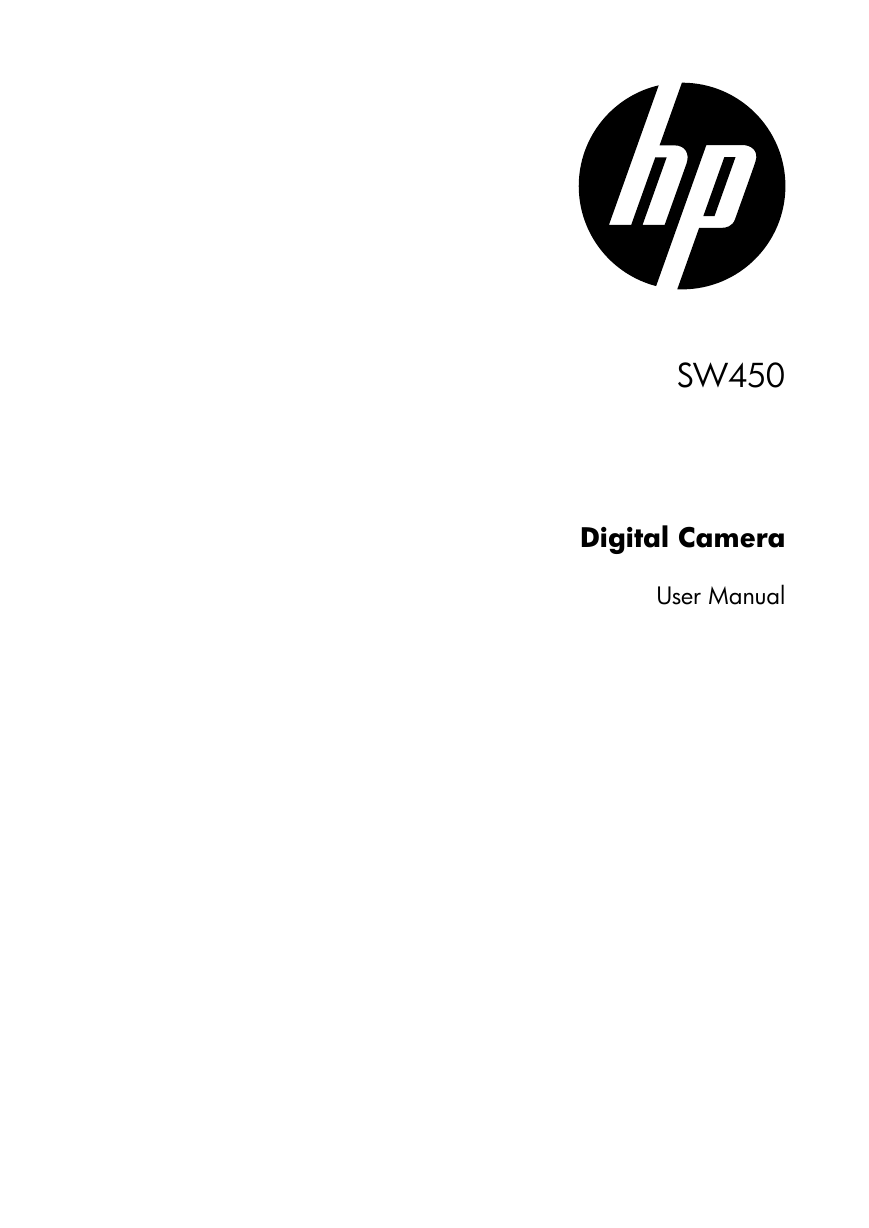

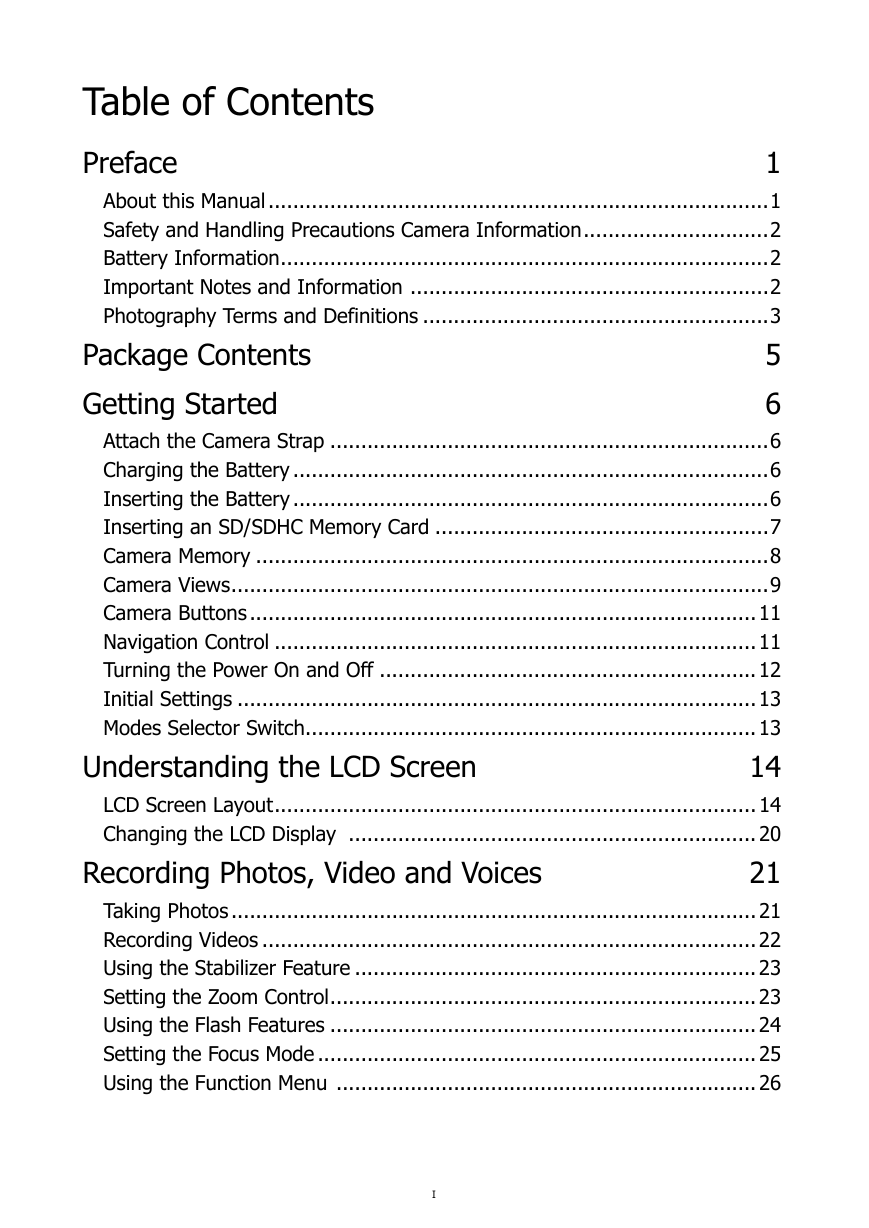

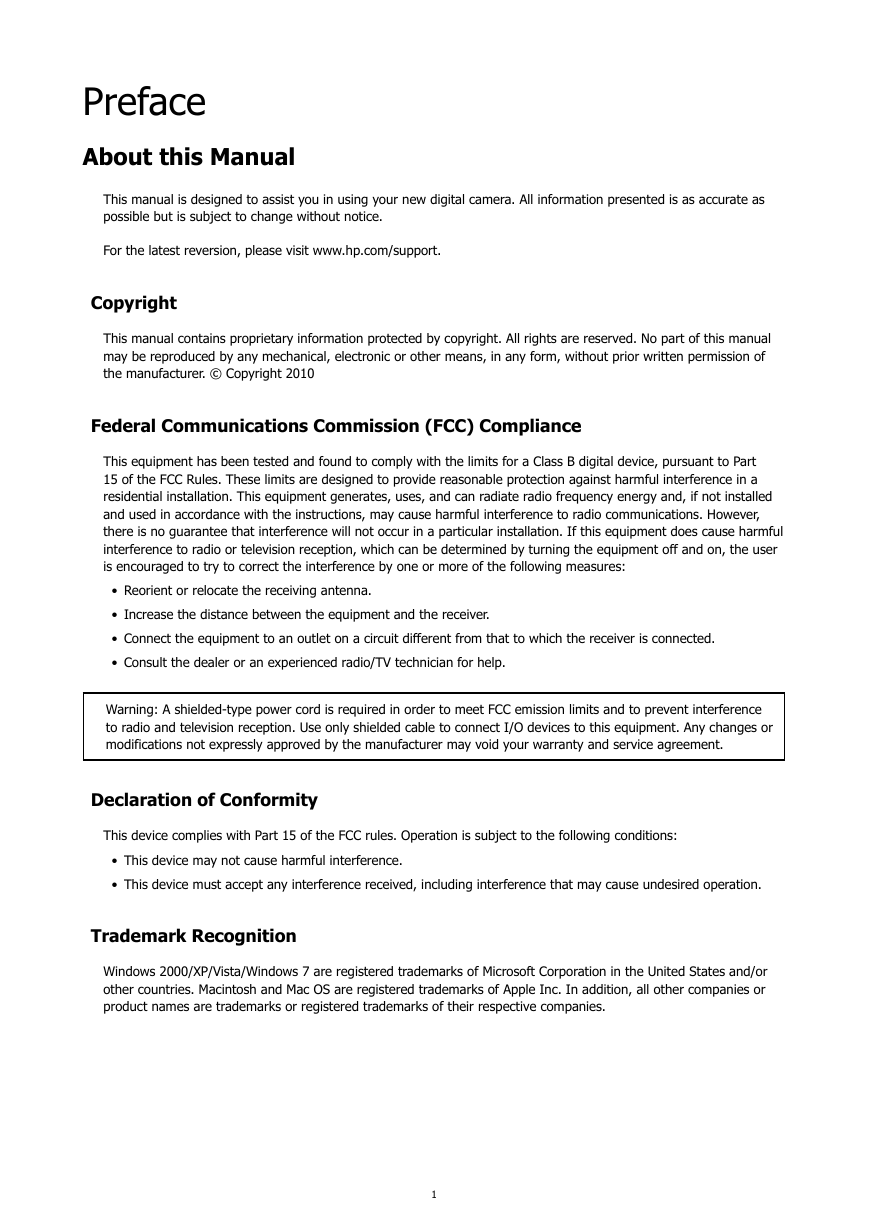
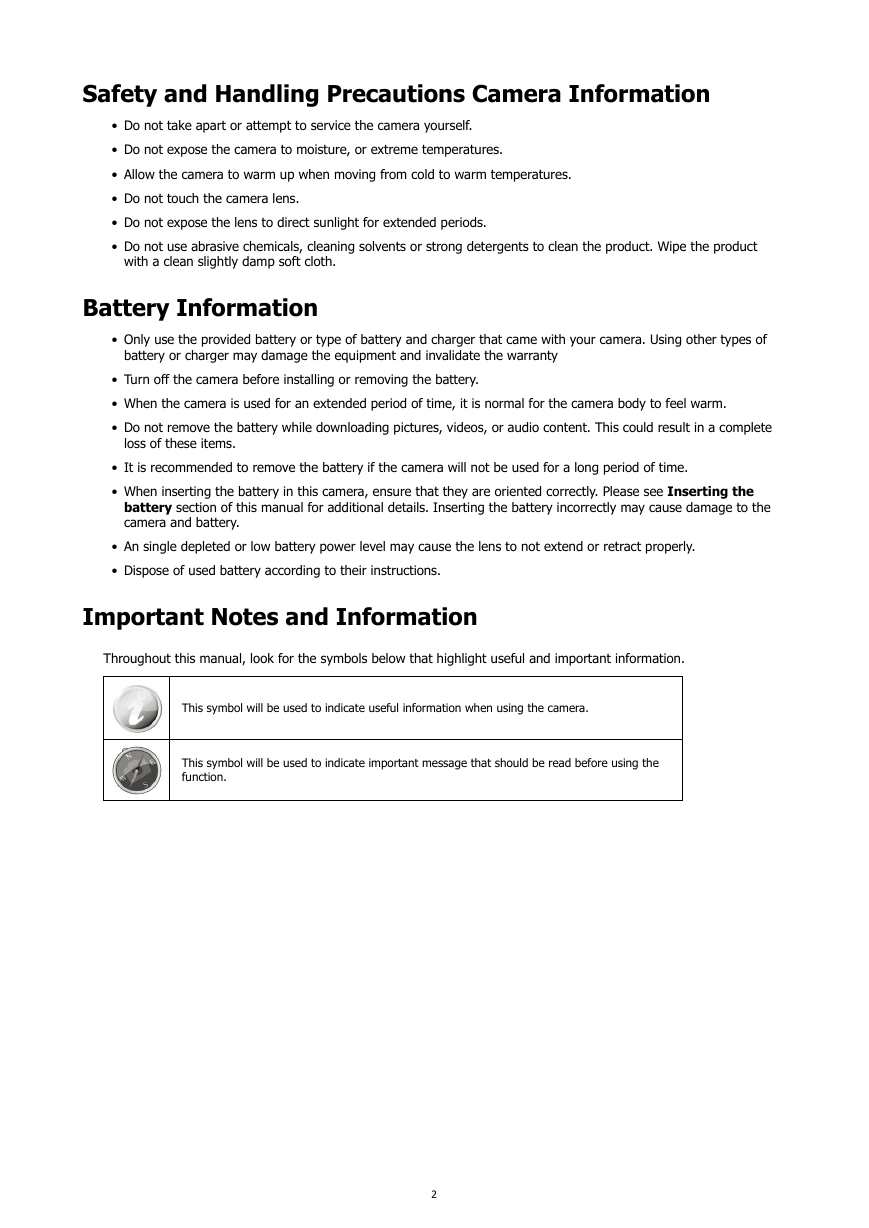
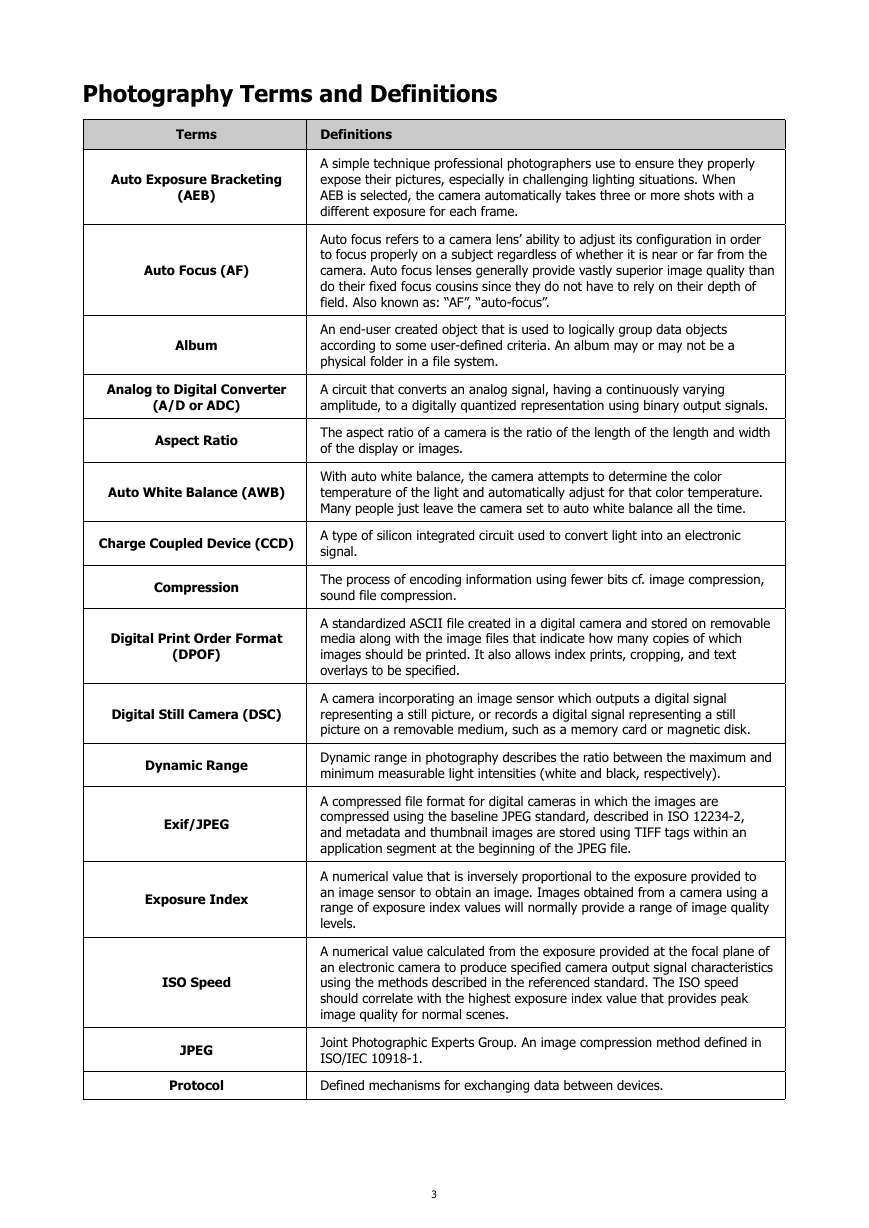









 2023年江西萍乡中考道德与法治真题及答案.doc
2023年江西萍乡中考道德与法治真题及答案.doc 2012年重庆南川中考生物真题及答案.doc
2012年重庆南川中考生物真题及答案.doc 2013年江西师范大学地理学综合及文艺理论基础考研真题.doc
2013年江西师范大学地理学综合及文艺理论基础考研真题.doc 2020年四川甘孜小升初语文真题及答案I卷.doc
2020年四川甘孜小升初语文真题及答案I卷.doc 2020年注册岩土工程师专业基础考试真题及答案.doc
2020年注册岩土工程师专业基础考试真题及答案.doc 2023-2024学年福建省厦门市九年级上学期数学月考试题及答案.doc
2023-2024学年福建省厦门市九年级上学期数学月考试题及答案.doc 2021-2022学年辽宁省沈阳市大东区九年级上学期语文期末试题及答案.doc
2021-2022学年辽宁省沈阳市大东区九年级上学期语文期末试题及答案.doc 2022-2023学年北京东城区初三第一学期物理期末试卷及答案.doc
2022-2023学年北京东城区初三第一学期物理期末试卷及答案.doc 2018上半年江西教师资格初中地理学科知识与教学能力真题及答案.doc
2018上半年江西教师资格初中地理学科知识与教学能力真题及答案.doc 2012年河北国家公务员申论考试真题及答案-省级.doc
2012年河北国家公务员申论考试真题及答案-省级.doc 2020-2021学年江苏省扬州市江都区邵樊片九年级上学期数学第一次质量检测试题及答案.doc
2020-2021学年江苏省扬州市江都区邵樊片九年级上学期数学第一次质量检测试题及答案.doc 2022下半年黑龙江教师资格证中学综合素质真题及答案.doc
2022下半年黑龙江教师资格证中学综合素质真题及答案.doc